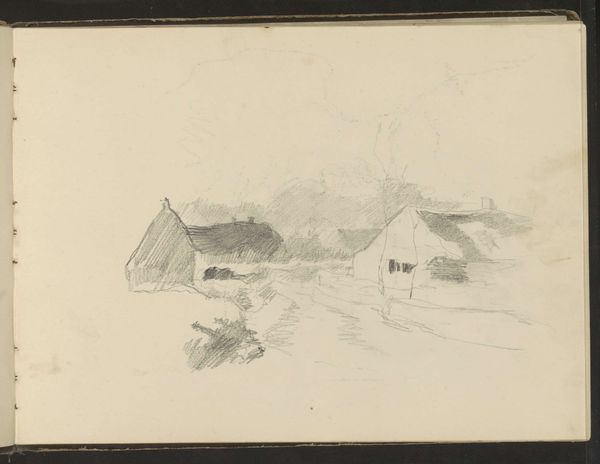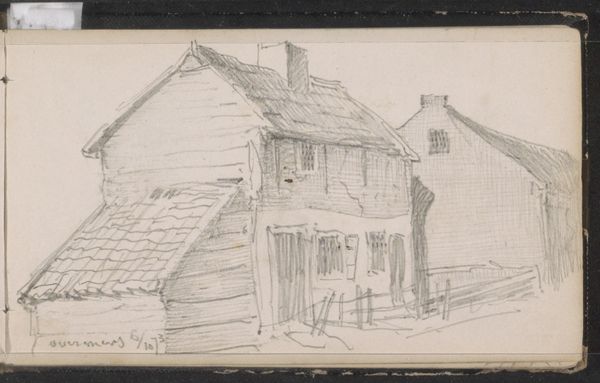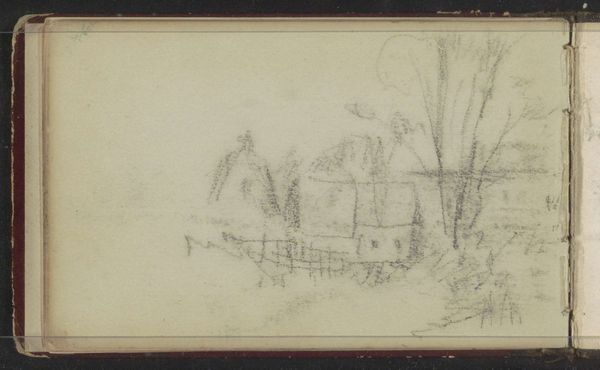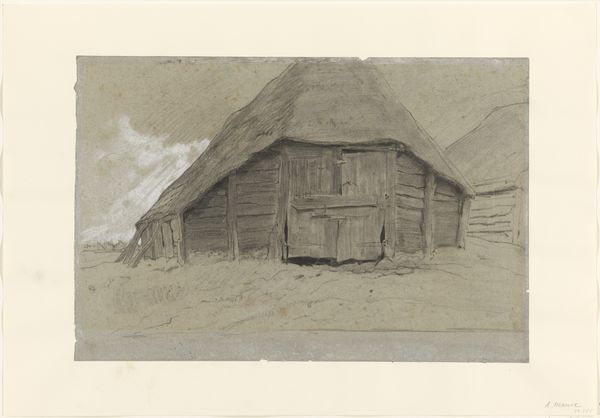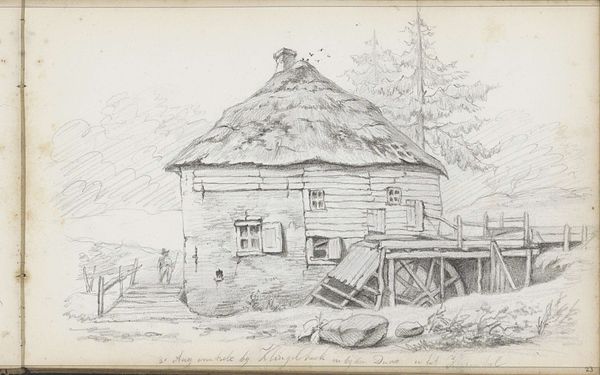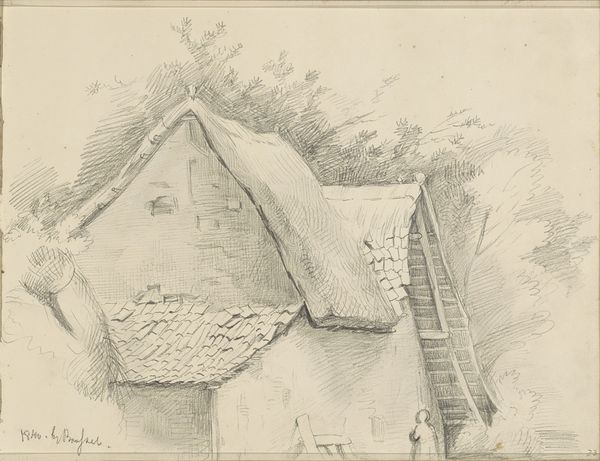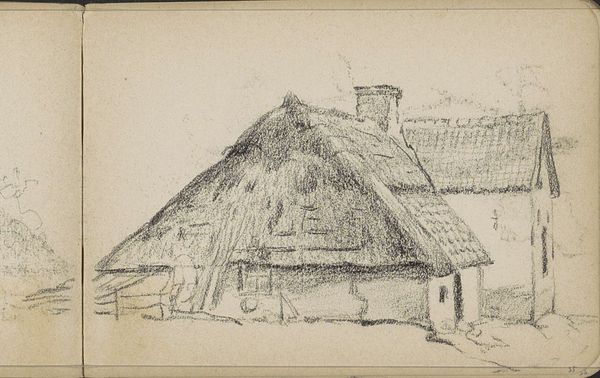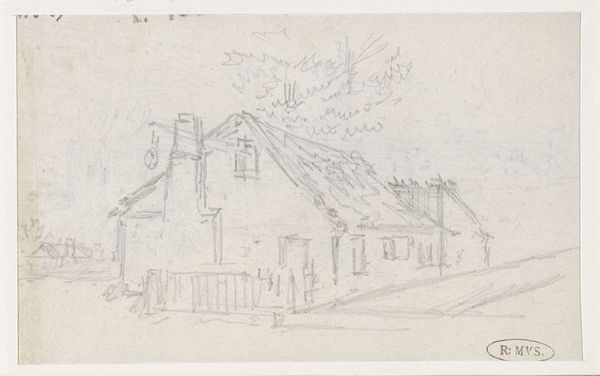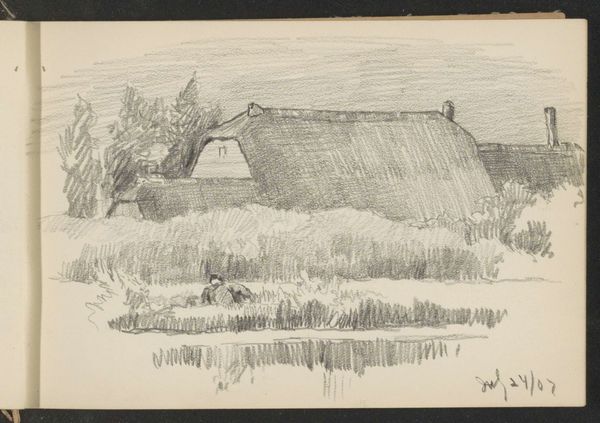
Dimensions: height 101 mm, width 157 mm
Copyright: Rijks Museum: Open Domain
Willem Cornelis Rip made this pencil drawing titled 'Boerderij', or Farmhouse, at an unknown date. It evokes the rural Netherlands, capturing the simplicity of agrarian life, a theme favored by artists seeking authenticity amidst industrialization. Rip's sketch engages with the cultural valorization of the countryside that gained momentum in the late 19th century, particularly in the Netherlands. The modest farmhouse with its thatched roof represents the traditional Dutch landscape, a symbolic space loaded with notions of national identity, simplicity, and connection to the land. Such imagery was often promoted through art institutions and exhibitions, reinforcing a romanticized view of rural life. To fully grasp the work's meaning, we might delve into archival sources, exhibition reviews, and agricultural histories to understand the complex interplay between art, rural society, and national identity during Rip’s time. The art historian's role is to contextualize artworks like these, revealing their nuanced engagement with the social and institutional forces of their era.
Comments
No comments
Be the first to comment and join the conversation on the ultimate creative platform.

